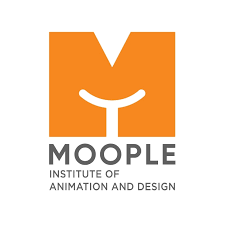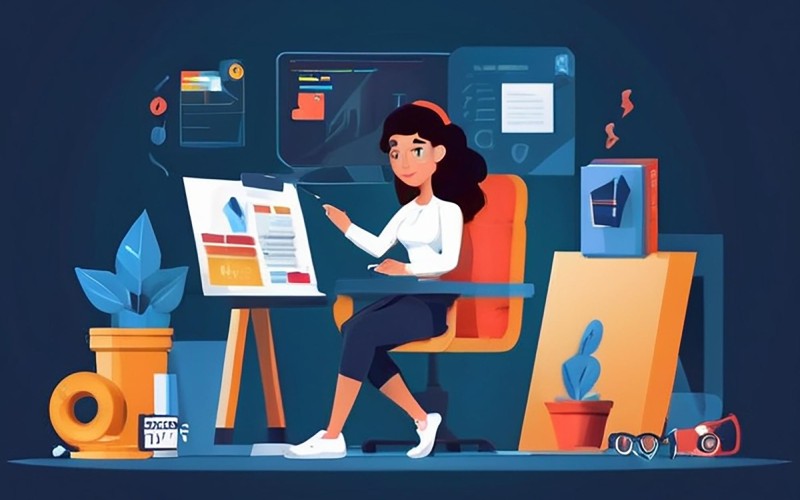Dreaming of transforming your design ideas into stunning illustrations that allure audiences? Perhaps you find yourself engrossed in design software but are missing some crucial pieces of the puzzle. However, a graphic design course could be the perfect next step, if you are ready to take your design skills to the next level.
While many qualified self-made designers are out there, enrolling in a graphic design certification programs offers several benefits. It offers a structured learning platform, industry-standard software expertise, portfolio-building opportunities, career guidance, and the chance to network with fellow creatives.
But what precisely will you discover in a graphic design course? Majorly five vital areas will provide you with the skills and proficiency to confidently navigate the design world
1. Design Fundamentals: The Bedrock of Great Illustrations
Whether you pursue a career in print, web, or branding, these core concepts will strengthen all your creative trials. A good graphic design course will ensure you master these basic skills-
- Colour Theory: Understanding how colours interact and stimulate feelings is pivotal for creating impactful illustrations. You will learn about colour balance, contrast, and using colour strategically to achieve your design goals. Colour plays a very vital role in graphic designing as colour has its way of conveying messages.
- Typography: Typography is much more than just choosing a font. Understanding typography implicates learning typefaces, order, kerning, and direction, all of which contribute to a design’s readability and overall aesthetic.
- Composition and Layout: Creating visually balanced and engaging layouts is crucial to effective interaction. You will learn about principles like the rule of thirds, negative space, and hierarchy, allowing you to arrange rudiments for maximum impact.
- Design Thinking: This is more than just coming up with ideas. It includes a structured approach to drive engagement. This skill helps you translate design concepts into solutions that resonate with users.
2. Mastering Industry- Standard Software Tools of the Industry
The current graphic design world revolves around significant software tools. Best graphic design colleges will provide you with courses that equip you with proficiency in the essential programs used by professionals. These might include-
- Adobe Photoshop: There is a lot of scope for learning in this tool. This is one of the most frequently used tools and it is very user-friendly.
- Adobe Illustrator: The go-to program for creating scalable vector graphics, logos, and illustrations. This is one of the best tools for graphic designers.
- Adobe InDesign: This software is perfect for laying out multi-page documents like brochures, magazines, and reports. Expertise in this tool will enable you to grow in your career as expertise in this tool is in huge demand.
3. Portfolio Building Showcasing Your Skills and Potential
A well-curated portfolio showcasing your skills and versatility is what will catch the eye of potential employers or clients. Graphic design courses frequently include dedicated portfolio structure elements, where you will learn-
- Project Selection: How to choose projects that perfectly demonstrate your strengths and design thinking process.
- Presentation: Formatting your portfolio for maximum impact, including the significance of clear layout, and concise and poignant descriptions of your work.
- Tailoring Your Portfolio: Understanding how to cater your portfolio to different clients’ or employers’ specific requirements and preferences.
4. Career Guidance for surviving in the Design Landscape
Understanding where to start and how to navigate your career path can be overwhelming. Top graphic design courses frequently include valuable career guidance factors that equip you with the following elements.
- Job market perceptivity: Understanding current trends in the industry and identifying career paths within graphic design.
- Resume Writing and Interview Skills: Best graphic design colleges offer soft skill courses along with academic curriculum like resume writing and interviewing skills which makes you confident and ready to face real-life challenges.
- Freelancing elements: For those interested in charting their course, the course might offer guidance on setting up a freelance business, pricing your services, and finding clients.
5. Building your Creative Network: Connecting with Fellow Designers
The design industry is a cooperative one. Building connections with fellow designers and industry professionals can be invaluable to your growth. numerous graphic design courses offer opportunities to network.
- Group projects: Working with other scholars on projects not only develops teamwork skills but also fosters connections with like-minded individuals.
- Guest Speakers: Courses may invite experienced designers and industry professionals to share their knowledge and perceptivity and deliver precious networking opportunities.
- Digital Communities: Numerous courses offer access to online forums or communities where you can connect with peers, share your work, and learn from each other’s clients.
Investing in Your Creative Future
While the graphic design certification programs offer a structured and comprehensive learning experience. It has a bright future because of its increased demand in industry. The multiverse era has stepped in and created a massive outbreak of graphic designers. Hope you have understood the concept of graphic designing and its scope. Dive into this magical journey of graphic design and become a part of the Moople institute family with just one click.

